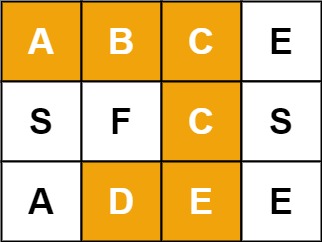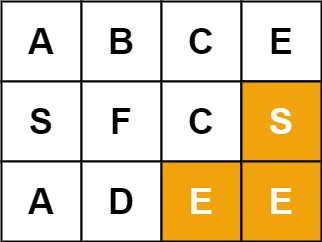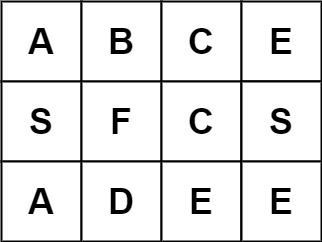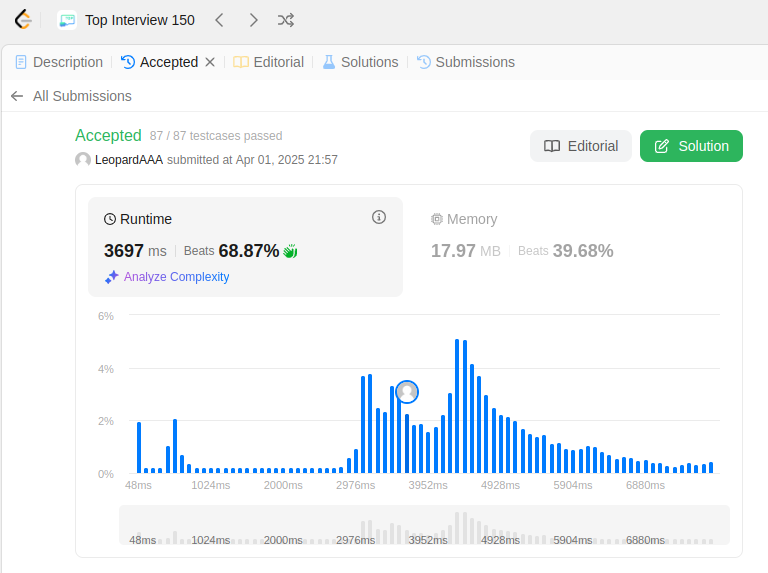Given an m x n grid of characters board and a string word, return true if word exists in the grid.
The word can be constructed from letters of sequentially adjacent cells, where adjacent cells are horizontally or vertically neighboring. The same letter cell may not be used more than once.
Example 1:

Input: board = [["A","B","C","E"],["S","F","C","S"],["A","D","E","E"]], word = "ABCCED" Output: true
Example 2:

Input: board = [["A","B","C","E"],["S","F","C","S"],["A","D","E","E"]], word = "SEE" Output: true
Example 3:

Input: board = [["A","B","C","E"],["S","F","C","S"],["A","D","E","E"]], word = "ABCB" Output: false
Constraints:
m == board.lengthn = board[i].length1 <= m, n <= 61 <= word.length <= 15boardandwordconsists of only lowercase and uppercase English letters.
ChatGPT's Solution:
class Solution: def exist(self, board: List[List[str]], word: str) -> bool: if not board: return False rows, cols = len(board), len(board[0]) def backtrack(r, c, index) -> bool: if index == len(word): return True if r < 0 or r >= rows or c < 0 or c >= cols or board[r][c] != word[index]: return False # Mark the cell as visited by modifying the board temporarily temp, board[r][c] = board[r][c], '#' # Explore all possible directions for dr, dc in [(1, 0), (-1, 0), (0, 1), (0, -1)]: if backtrack(r + dr, c + dc, index + 1): return True # Restore the cell back to its original state board[r][c] = temp return False for r in range(rows): for c in range(cols): if board[r][c] == word[0] and backtrack(r, c, 0): return True return False





 浙公网安备 33010602011771号
浙公网安备 33010602011771号